This article addresses the advantages and benefits of Human Centric Lighting, which implies that mostly the intensity and colour temperature of the light source can be adjusted to benefit human health. This is superior to fixed colour temperature lighting fixtures due to better suitability to the internal 24 hour human clock or the so called “circadian rhythm”. The circadian rhythm is responsible for producing hormones that cause alertness/awakeness such as Dopamine or inducing sleep such as Melatonin.
Few hundred years ago, humans used to spend the majority of their awake times outside, where the changes in the Sun’s colour temperature during the day and the Moon at night was in harmony with the human internal clock. Nowadays, humans spend majority of their awake times, inside an office or at home, where the colour temperature of the lighting fixtures is fixed. This is not in tune with the internal body clock and could disrupt circadian rhythm. For example, blue light of about 10,000 K colour temperature, suppresses Melatonin and encourages Dopamine. Therefore having an office with light fixtures of high colour temperature is useful in the early morning at the start of the work day where workers need to be alert and ready to work. However the same light fixture can cause insomnia if it is used at night. The three figures below show different colour temperature lights and the effects they have on human mood and productivity.
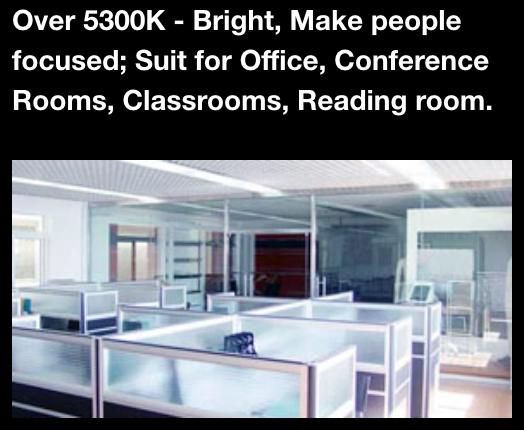
Figure 1: Bright light over 5300 K used in the offices induces alertness.
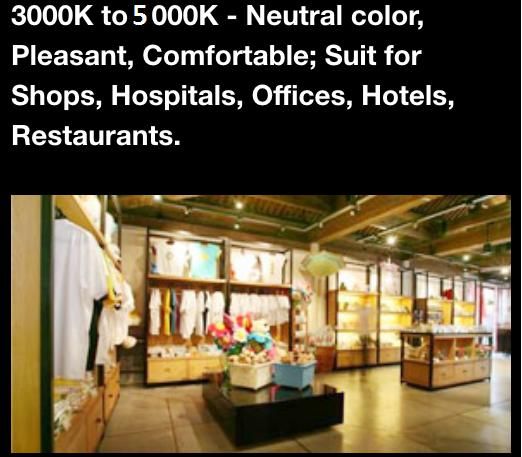
Figure 2: Medium range Colour temperature is suitable for shops and restaurants for its comfortable effect
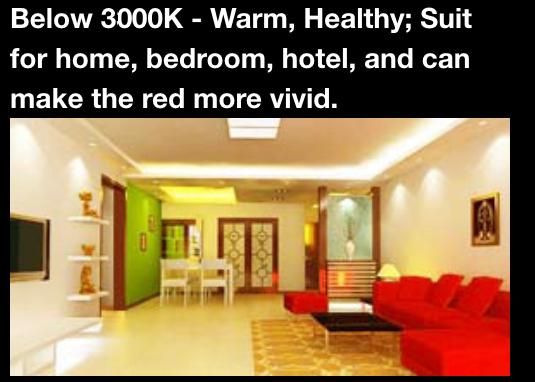
Figure 3: Low colour temperature below 3000 K sets the mood for relaxing and sleep
Therefore a light fixture that is capable of dimming the intensity and tuning the colour temperature can improve conditions for people and be in-sync with their internal clock. This is the basic idea behind Human Centric Lighting (HCL).
If one examines the variation of colour temperature of the Sun during the day and the Moon’s colour temperature, the following is observed:
-
Early morning: Low light level, low colour temperature
-
Mid-day: High light level, high colour temperature
-
Evening: Low light level, low colour temperature
-
Night (Moon light): Very low light level, medium colour temperature.
Therefore following the same pattern for a tunable light source, as for the light level and the colour temperature, will bring the artificial light source in tune with the circadian cycle. This could help and even correct internal clock rhythms in humans.
Human Centric Lighting has been used in different environments such as schools, companies, factories, etc. to improve productivity and mood as shown in the following examples:
-
In a school, at the beginning of the day, the colour temperature has been set to 12,000 K for half hour to close the sleep cycle. After that, the colour temperature was brought down to between 5000-6500K which is suitable for studying. During break times and exam times, it was changed to 2700K to have a relaxing effects. The control of colour temperature and intensity of light in harmony with circadian rhythm has increased productivity of students.
-
In a manufacturing company, where workers needed to inspect defects in parts, the colour temperature was set to 5000K and the result was better visual sharpness. This caused the workers to identify defects better, reduced the fatigue factor at the end of the day, and the workers could sleep better at night. Higher colour temperatures, reduce the pupil size and increase visual sharpness. The Scotopic/Photopic ratio of the lamp is related to its spectral distribution and the higher the s/p ratio, the larger will be the proportion of the blue light and smaller will be the pupil size, resulting in an increase in the visual sharpness. The Human Centric Lighting has caused increased productivity in the manufacturing company.
-
In a hospital where HCL was used, the usage of lower colour temperatures has produced a more relaxing environment and has caused the patients to heal faster.
The pictures in the next page show a hospital’s waiting room and patient room where some coloured design has been implemented which has had some positive impact on patient’s sense of well-being. Inclusion of wild life patterns such as the picture of the bird flying, has produced a more natural environment and expedited the process of healing in hospitals. Since emotional well- being plays an important part in the physical well-being, the inclusion of HCL is well justified in hospitals.
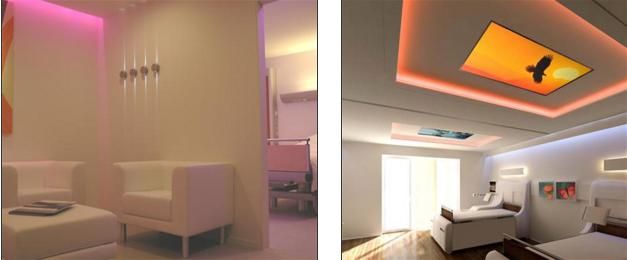
Figure 4: Human Centric Lighting in hospitals as shown in the waiting room (left) and patient room (right)
Further research assesses the value of human centric lighting. Physical, mental and biological changes could be correlated to specific light conditions. As mentioned in previous examples, the two main applications of Human centric Lighting are a) Effective lighting can improve cognitive performance and b) Effective lighting can create a stimulating and healing environment. Better productivity at the work environment, sounder sleep at night, better mood and faster healing of diseases and skin conditions can all be correlated with Human Centric Lighting.
Human Centric Lighting is part of a bigger technological advancement called Human Centric Sensing. The idea is to equip smart phones with different kinds of sensors, some of them already do exist such as cell phone cameras and GPS modules, but add to them other sensors such as accelerometers, health monitoring devices, gyros etc. This way, humans can participate in collecting data about themselves or environmental conditions for example and share their experiences with others through social media such as Facebook, Youtube and Twitter. In relation to HCL, lighting in an office, a library or a hospital can be connected to smartphones. This can all be connected to the building’s IT network. Employees can control and access building services using smart phones to turn on the light at any area when they need to. Lighting fixtures equipped with sensors can capture occupancy and other information such as temperature and humidity. The information can be accessed through smart phones. Figure below shows the concept.
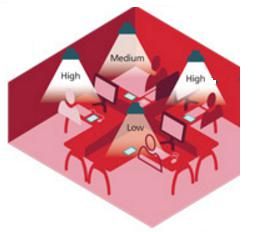
Figure 5a: Light control through smart phone

Figure 5b: Occupancy search through smart
Flicker: Flicker is defined as rapid and repeated changes over time in the brightness of light. There has been new concerns about the flicker in LED and Florescent lamp industries that may induce health hazards. Flicker can be classified into visible and invisible categories. The visible flicker which is in the frequency range 3-70 Hz, can induce some form of epilepsy. A few second exposure to visible flicker can affect some epileptic patients and throw them into seizures. Normally the Florescent lamps that operate at frequencies of 50 to 60 Hz, flicker at double the frequency at 100-120 Hz. However when the lamp gets old, the rapid change of brightness is not the same in both directions and the flicker of 50-60 Hz is produced that can affect epileptic patients. Invisible flicker happens at frequencies between 70 to 165 Hz depending on the driver circuitry design and long term exposure to it, can cause general feeling of sickness, headaches and impaired visual performance. Lamp designers should be aware of these health hazards and test their lamps for visible and invisible flicker. Meters that can measure light flicker frequency are very useful and are discussed in this article.
Allied Scientific Pro has introduced the first smart-phone spectrometer that can measure the colour temperature, intensity and spectrum of light and monitor the intensity and colour temperature of tunable light sources. Measuring light parameters goes hand in hand with controlling the parameters of a light source. Attached to a smart phone device, lighting passport displays colour temperature, intensity in Lux, ppfd and many other useful lighting parameters to monitor lighting conditions. Please refer to this website for features and specifications.
Figure 6, shows a measurement colour temperature and intensity by lighting passport.
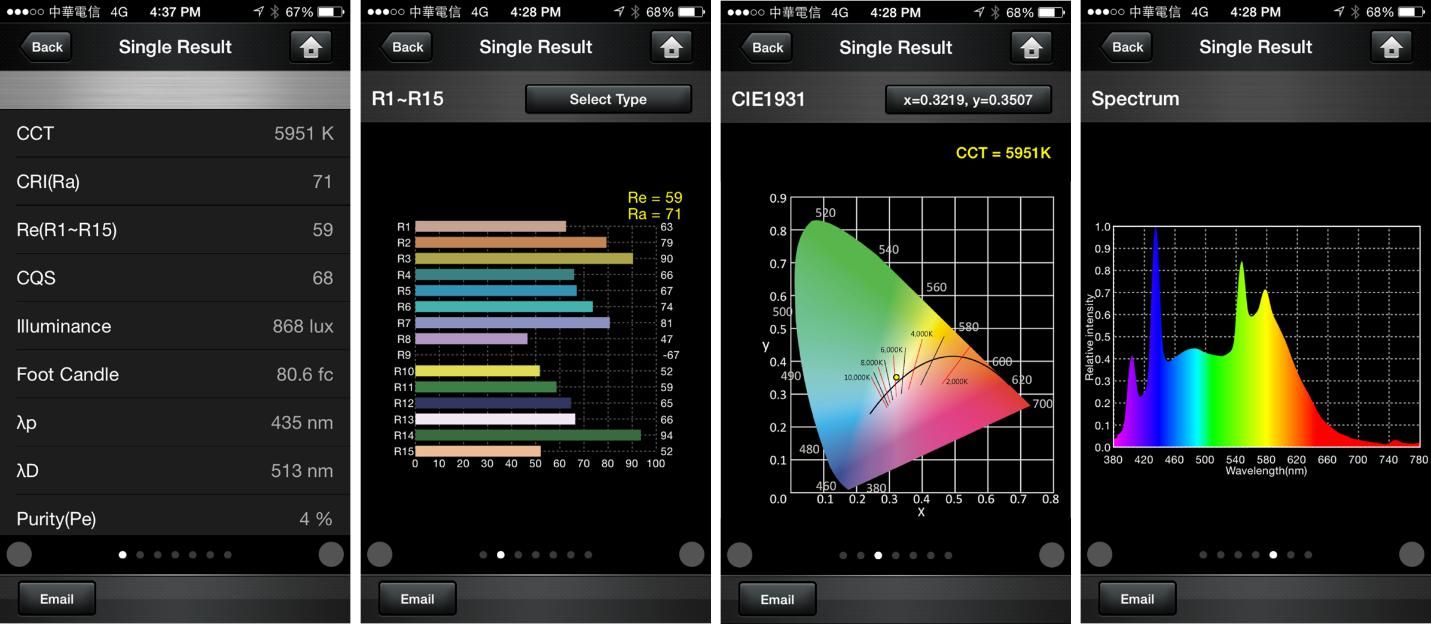
Figure 6: Lighting Passport measurement of colour temperature and relative light intensity
Aside from measurement of intensity and colour temperature, the new models of Lighting Passport (Flagship Pro, Standard-Pro, Essence-Pro) which will be introduced in near future can measure temperature, humidity and light flicker frequency which were discussed earlier.
References:
-
Human Centric Lighting, Stan Walerczyk, CLEP, LC, Principal, Lighting Wizards
-
Research assesses the value of Human-Centric Lighting, Caroline Hayes, LED’s Magazine, July 20, 2015
-
Lighting Design: Creating A Less Intimidating Hospital Experience, Sjef Cornelissen and Dr Martine Knoop, World Health Design
-
Human-centric Sensing, Philosophical Transaction of Royal Society, 370 ser. A, 2012, pp 176-197, Mani Srivastavay, Tarek Abdelzaherz, and Boleslaw Szymanski